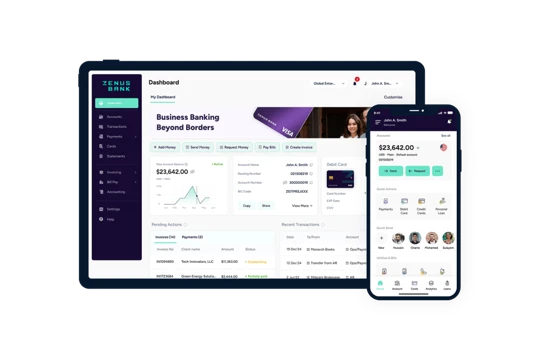Developments in digital payments: Embedded payments
Technology
In the wake of the global pandemic, the landscape of consumer transactions has undergone a profound transformation. Fueled by necessity and convenience, embedded payments have emerged as a key winner at this time, and an important variable of effective, modern commerce. This capability is crucial for maximizing conversions and delivering a great customer experience. What was once a budding trend has now become the norm, permeating diverse industries and reshaping commerce.
Embedded payments are becoming norm
Embedded payments offer numerous benefits. They provide unparalleled convenience for consumers, allowing seamless transactions within the digital ecosystems they frequent daily. For example, social media platforms can now serve as full-fledged marketplaces, while mobile apps offer integrated payment options for products and services. This flexibility empowers consumers with more choices and control over their purchasing journeys.
For businesses, embedded payments offer opportunities for frictionless commerce and deeper customer relationships. By removing barriers to purchase, companies can increase conversions and improve customer satisfaction. Projections indicate that by 2026, the global market for embedded payments will soar to $130 billion, underscoring their undeniable appeal.
Key developments
1. Blockchain-based embedded payments
Blockchain technology has emerged as a game-changer in the realm of embedded payments, offering unparalleled security, transparency, and efficiency. At its core, blockchain facilitates decentralized peer-to-peer transactions, eliminating the need for intermediaries and reducing transaction costs. This innovation is reshaping the way businesses conduct transactions and interact with customers. One of the key features of blockchain-based embedded payments is the integration of smart contracts. These self-executing contracts automate the execution of predefined terms and conditions, enabling seamless transactions without the need for manual intervention. Smart contracts not only streamline payment processes but also reduce the risk of disputes and fraud.
Moreover, blockchain’s immutable ledger ensures the integrity and transparency of transactions. Every transaction is recorded on a distributed ledger that is accessible to all parties involved, creating a tamper-proof record of transactions. This level of transparency enhances trust among stakeholders and reduces the risk of data manipulation or fraud.
As blockchain technology continues to evolve, we can expect to see further innovations in embedded payments, including cross-border transactions, micropayments, and digital asset tokenization. These advancements have the potential to revolutionize the way businesses and consumers interact in the digital economy, opening up new opportunities for growth and innovation.
2. IoT-enabled payments
The Internet of Things (IoT) has ushered in a new era of connected devices, revolutionizing the way we interact with technology and conduct transactions. IoT-enabled payments leverage the power of connected devices to enable seamless and secure transactions in various contexts, from smart homes to healthcare and transportation. In the realm of smart homes, IoT devices such as smart refrigerators, thermostats, and door locks are being equipped with payment capabilities, allowing consumers to make purchases directly from their devices. Imagine replenishing groceries from your refrigerator or ordering household supplies from your voice-activated assistant with a simple voice command. It sounds rather futuristic but so did most modern tech once.
In healthcare, IoT-enabled devices are revolutionizing patient care by facilitating remote monitoring and personalized treatment plans. Patients can securely transmit medical data to healthcare providers and make payments for medical services using IoT-enabled devices, enhancing convenience and accessibility. Furthermore, IoT-enabled payments are driving innovation in transportation and logistics, enabling contactless payments for tolls, parking, and public transportation. Connected vehicles equipped with payment capabilities can seamlessly pay for fuel, maintenance, and parking, enhancing the overall mobility experience for consumers.
As IoT adoption continues to grow, we can expect to see further integration of payment capabilities into a wide range of connected devices, transforming the way we make payments and interact with the world around us – all to the benefit of seamlessness.
3. Tokenization of payment data
In an era of increasing cyber threats and data breaches, the security of payment data is paramount. Tokenization has emerged as a powerful solution to minimize the inherent risk of payment transactions by replacing sensitive payment data with unique tokens. Unlike traditional payment methods that rely on static card numbers, tokenization generates dynamic tokens that are unique to each transaction. These tokens are meaningless to hackers and cannot be used to make unauthorized transactions, reducing the danger of fraud and data theft.
Furthermore, tokenization helps businesses achieve compliance with regulatory requirements such as the Payment Card Industry Data Security Standard (PCI-DSS). By minimizing the storage and transmission of sensitive payment data, businesses can mitigate the risk of data breaches and protect customer information. The adoption of tokenization is gaining momentum across industries, from e-commerce and retail to healthcare and finance. Payment processors and financial institutions are increasingly incorporating tokenization into their payment infrastructure to enhance security and protect customer data.
As the digital economy continues to evolve, tokenization will play a crucial role in safeguarding payment transactions and building trust between businesses and consumers. With its help, businesses can enhance security, reduce risk, and deliver a frictionless payment experience for their customers.
Conclusion
In conclusion, the landscape of embedded payments is witnessing a fascinating evolution. From blockchain-based innovations to IoT-enabled transactions and the tokenization of payment data, the future of embedded payments holds immense promise and potential. These developments not only enhance the security and convenience of transactions but also pave the way for a more interconnected and seamless commerce experience. With each advancement, embedded payments continue to redefine boundaries, creating new opportunities for growth in the digital economy.



